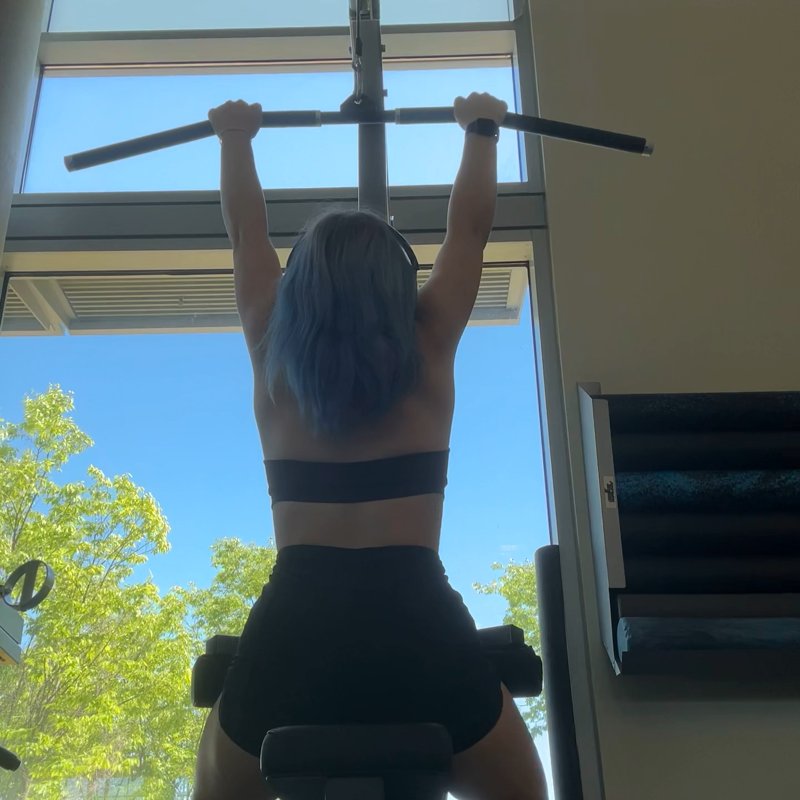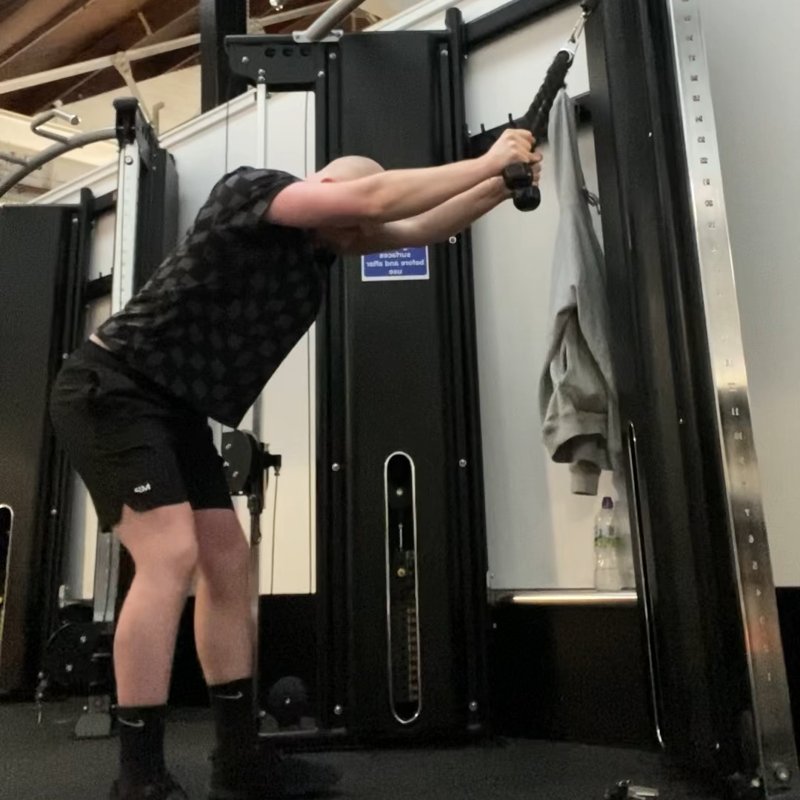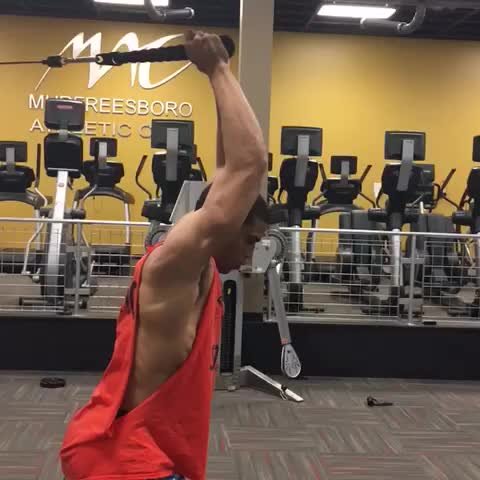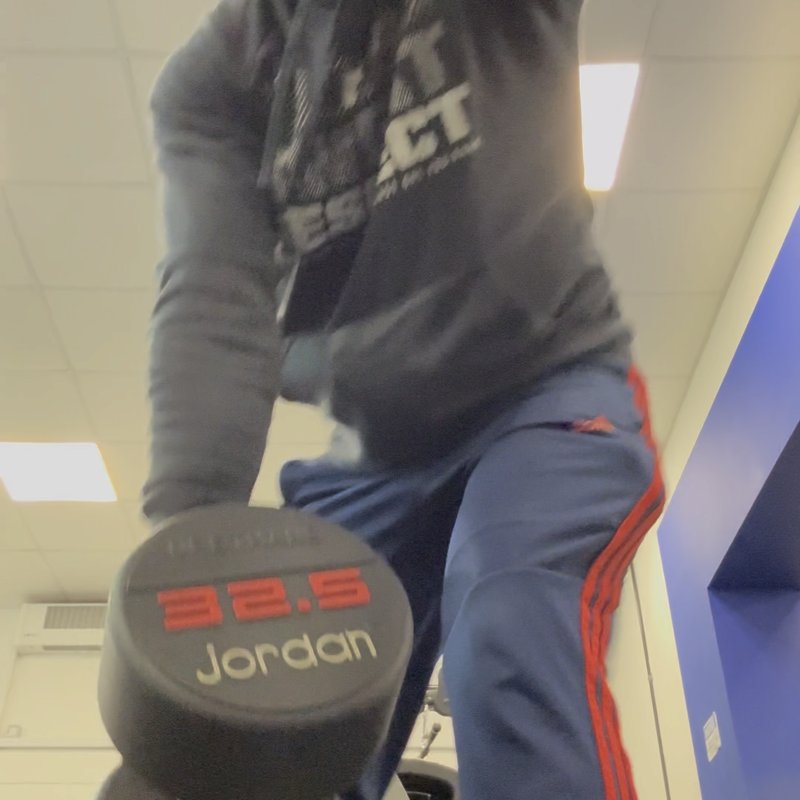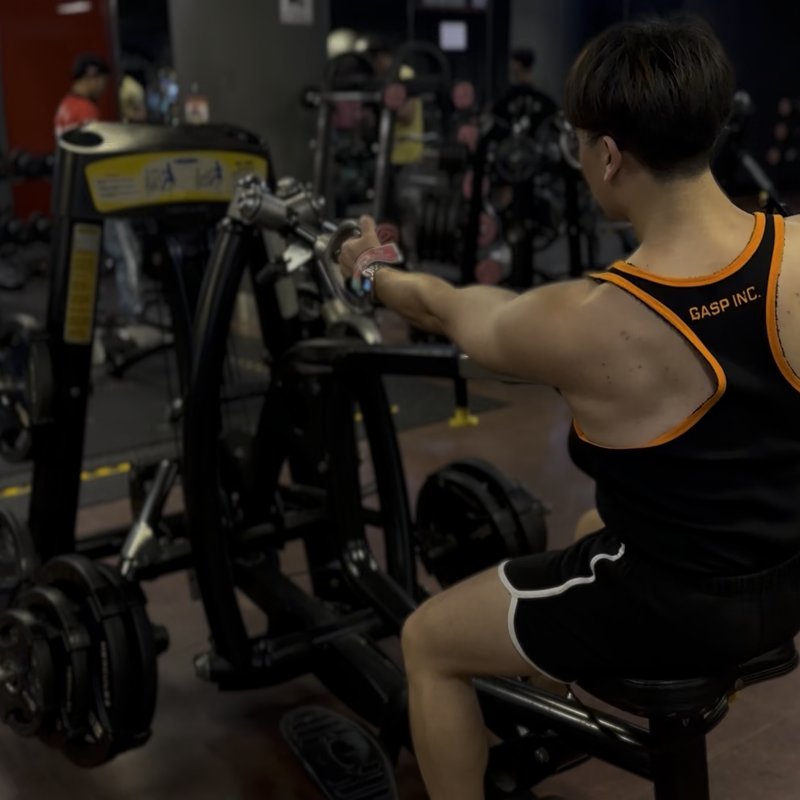Straight Arm Pulldown: The Ultimate Guide
The Straight-Arm Lat Pulldown is a cable exercise that isolates the latissimus dorsi muscles by keeping the arms straight while pulling a cable attachment from an overhead position down toward the thighs.

Quick Facts
Key Benefit
Targeted lat development with constant tension
Primary Muscles
Lats
Secondary Muscles
Abdominals, Pectoralis Minor, Posterior Deltoids, Rhomboids, Traps, Triceps
Equipment
cable machine
Difficulty
Intermediate
Type
Strength
In This Guide
Ready to master the Straight Arm Pulldown?
Track your progress, see improvements over time, and build strength consistently.
Download GravitusThe Straight-Arm Lat Pulldown stands as a uniquely effective isolation exercise for developing the latissimus dorsi—the broad, flat muscles spanning the middle and lower back that create the coveted V-taper physique. Unlike compound pulling movements that involve significant elbow flexion and multiple muscle groups, this exercise isolates the lats through their function as shoulder extensors while keeping the arms straight throughout the movement.
What makes this exercise particularly valuable is its ability to create constant tension on the lats through a complete range of motion. The cable's consistent resistance profile ensures the muscles remain engaged from the fully stretched position at the start to the maximally contracted position at the finish. This targeted approach complements traditional pulling exercises like rows and pulldowns, which distribute tension across multiple muscle groups.
Beyond aesthetic benefits, strengthening the lats through this movement pattern can improve posture, enhance shoulder stability, and contribute to better performance in various sports and daily activities. The lats play important roles in movements ranging from swimming and climbing to lifting and reaching, making their isolated development functionally beneficial beyond physique enhancement.
Whether you're looking to add width to your back, improve the mind-muscle connection with your lats, or supplement your compound pulling movements with targeted isolation work, the Straight-Arm Lat Pulldown offers an effective and joint-friendly approach to developing one of the body's largest muscle groups.
Benefits of Straight-Arm Lat Pulldowns
The Straight-Arm Lat Pulldown offers several unique advantages that make it a valuable addition to any back training program.
Isolated Lat Targeting
Places primary emphasis on the latissimus dorsi by removing elbow flexion, creating focused stimulation where compound movements distribute tension across multiple muscles.
Enhanced Mind-Muscle Connection
The isolation nature helps develop improved neuromuscular awareness of the lats, which can carry over to better activation during compound pulling movements.
Constant Tension
The cable resistance maintains continuous tension on the lats throughout the entire range of motion, potentially increasing time under tension and muscle fiber recruitment.
Versatility in Programming
Can be effectively implemented as a pre-exhaust technique before compound movements, a finisher after heavy work, or a rehabilitation exercise when joint issues limit other pulling movements.
Complementary Movement Pattern
Works the lats through pure shoulder extension without elbow flexion, creating a different stimulus that complements traditional rows and pulldowns.
Proper Form & Technique
Setup
- Attach a straight bar or rope handle to a cable pulley set at the highest position.
- Stand facing the cable machine with feet approximately shoulder-width apart for a stable base.
- Grasp the attachment with both hands using an overhand grip (palms facing down) or neutral grip (palms facing each other) if using a rope.
- Step back a few feet to create tension in the cable with your arms extended overhead and slightly forward, not directly vertical.
- Position your body with a slight forward lean from the hips, maintaining a neutral spine throughout the exercise.
- Establish a slight bend in your knees to reduce lower back stress and provide stability.
- Engage your core to stabilize your torso and prevent excessive arching of the lower back.
- Depress your shoulders away from your ears and maintain this position throughout the movement.
Movement
- Keeping your arms straight with a very slight elbow bend (not completely locked), initiate the movement by engaging your lats.
- Pull the attachment in an arcing motion down toward your thighs while maintaining the slight forward lean.
- Focus on using your lats to drive the movement, imagining them as the primary movers rather than your arms.
- Continue the downward pull until the attachment reaches your thighs or upper legs.
- Hold the contracted position briefly, focusing on squeezing your lats.
- Slowly return to the starting position with control, maintaining tension throughout the movement.
- Allow your arms to raise back to the starting position with a full stretch in the lats, but without allowing the weight stack to touch down.
- Maintain consistent breathing throughout—typically exhaling during the pulling phase and inhaling during the return.
Key Form Tips
Arm Position
Keep your arms mostly straight with just a slight bend at the elbows to reduce stress while avoiding complete lockout which can place excess strain on the elbow joints.
Lat Engagement
Focus on initiating and driving the movement with your lats rather than your shoulders, arms, or momentum.
Controlled Tempo
Avoid using momentum or body swinging to move the weight, instead maintaining strict form with deliberate movement.
Range of Motion
Utilize a complete range of motion from a full stretch at the top to a complete contraction at the bottom without compromising form.
Core Stability
Maintain core engagement throughout to support proper posture and prevent lower back arching, particularly at the bottom position.
Muscles Worked
Primary Muscles
- lats: The large, flat muscles spanning the width of the middle and lower back, which are the primary targets and responsible for shoulder extension during this movement.
- teres major: A small muscle near the shoulder blade that works with the lats during the pulling motion, often called the "lat's little helper."
Secondary Muscles
- posterior deltoids: The rear portion of the shoulder muscles, which assist during the pulling phase of the movement.
- rhomboids: The muscles between your shoulder blades that assist with scapular retraction during the movement.
- traps: The lower portion of the trapezius muscle that assists with scapular depression and stabilization.
- triceps: Work isometrically to maintain the straight-arm position throughout the exercise.
- abdominals: Engage isometrically to maintain proper posture and prevent excessive lower back arching.
- pectoralis minor: Assists with scapular movement during the pulldown motion.
Common Mistakes and How to Fix Them
Bending the Elbows
Significantly flexing the elbows during the movement, which shifts emphasis away from the lats and introduces biceps involvement. Maintain only a slight elbow bend (approximately 10-15 degrees) throughout the entire range of motion. Focus on keeping this position consistent from start to finish rather than allowing the elbows to bend more as the movement progresses. Consider using a lighter weight if maintaining straight arms is challenging. Mentally focus on your lats as the prime movers rather than pulling with your arms.
Using Momentum
Swinging the torso or using body momentum to move the weight rather than controlled lat contraction. Slow down the entire movement, particularly the lowering (eccentric) phase. Implement a brief pause at the bottom position to eliminate momentum. Reduce the weight if necessary until proper control can be maintained throughout the set. Consider a specific tempo prescription (e.g., 2 seconds down, 1 second squeeze, 3 seconds up) to enforce controlled movement.
Excessive Back Arching
Allowing the lower back to excessively arch, particularly at the bottom of the movement, which can reduce lat activation and potentially cause discomfort. Engage your core throughout the movement to maintain a neutral spine position. Focus on a slight hip hinge rather than lumbar extension to achieve the proper body angle. Consider reducing the range of motion slightly if maintaining proper position at the bottom is challenging. Use a mirror from the side when initially learning the exercise to monitor your back position.
Insufficient Range of Motion
Not utilizing a complete range of motion, either by not fully extending at the top or not pulling far enough down, limiting muscle development. Focus on achieving a full stretch at the top position, feeling the lengthening of the lats with arms extended overhead. Ensure you pull the attachment all the way down to your thighs at the bottom position without compromising form. If full range is difficult, consider temporarily reducing the weight to develop proper movement patterns. Use controlled negatives (slower return phase) to enhance awareness of the complete range.
Shoulder Elevation
Allowing the shoulders to rise toward the ears, particularly at the start of the movement, which reduces lat activation and increases upper trapezius involvement. Consciously depress your shoulder blades down and slightly back before initiating each repetition. Maintain this depressed shoulder position throughout the entire movement. Practice scapular depression drills separately to develop awareness and control of this position. Consider using a lighter weight initially until proper shoulder positioning becomes habitual.
Straight-Arm Lat Pulldown Variations
Equipment Variations
-

Rope Straight-Arm Pulldown
Using a rope attachment that allows the hands to separate slightly at the bottom, potentially creating a different angle of resistance.
-

Single-Arm Straight-Arm Pulldown
Performing the movement one arm at a time to address potential muscle imbalances and increase focus on unilateral development.
-
Band Straight-Arm Pulldown
Utilizing resistance bands instead of a cable for a different resistance profile that increases tension at the stretched position.
-

Machine Straight-Arm Pulldown
Some gyms feature dedicated machines for this movement that guide the path along a fixed trajectory.
Technical Variations
-

Kneeling Straight-Arm Pulldown
Performing the movement from a kneeling position, which can help reduce lower back involvement and increase focus on lat isolation.
-

Incline Bench Straight-Arm Pulldown
Executing the movement while lying face up on an incline bench, which changes the angle of pull and potentially increases range of motion.
-

Pause Straight-Arm Pulldown
Implementing a 2-3 second pause at the bottom position to increase time under tension and eliminate momentum.
-

Eccentric-Focused Straight-Arm Pulldown
Emphasizing the return phase by taking 3-5 seconds to control the weight back to the starting position.
Frequently Asked Questions
The straight-arm lat pulldown and traditional lat pulldown differ in several key ways that affect muscle engagement, joint demands, and their respective roles in a comprehensive back training program.
The primary mechanical difference is arm position: In straight-arm pulldowns, the arms remain mostly extended throughout the movement, isolating the lats' function as shoulder extensors. In traditional pulldowns, significant elbow flexion occurs, engaging the biceps and other pulling muscles in addition to the lats.
This mechanical difference creates distinct muscle recruitment patterns: Straight-arm pulldowns place greater isolated tension on the latissimus dorsi with minimal biceps involvement. Traditional pulldowns distribute tension across multiple muscle groups including the lats, rhomboids, biceps, and rear deltoids, making them more of a compound movement.
From a functional perspective: Straight-arm pulldowns train the lats specifically in their role as shoulder extensors without elbow flexion. Traditional pulldowns train the integrated pulling pattern that combines shoulder extension with elbow flexion, more closely mimicking movements like climbing or rowing.
In terms of loading potential: Traditional pulldowns typically allow for heavier loading due to the mechanical advantage provided by the multiple joint movement. Straight-arm pulldowns generally require lighter weights due to the less favorable leverage of extended arms.
Rather than viewing these as competing exercises, most effective back development programs incorporate both movements, with each serving a complementary purpose: Traditional pulldowns for overall back mass, strength, and integration of pulling muscles. Straight-arm pulldowns for improved lat isolation, mind-muscle connection enhancement, and targeted development.
The ideal approach for most trainees is to include both variations in their training program, either within the same session (often traditional pulldowns first, followed by straight-arm as a finisher) or across different training days based on specific goals and program design.
The appropriate weight for straight-arm lat pulldowns depends on your experience level, current strength, and most importantly, your ability to maintain proper form throughout the movement. This exercise typically requires lighter loading than many other back exercises due to the biomechanically disadvantaged position of extended arms.
As a general guideline, select a weight that allows you to complete your target repetitions with strict form while feeling significant lat engagement. For most lifters, this means starting quite conservatively—often lighter than you might initially expect—to develop proper movement patterns before increasing load.
The key indicators that your weight selection is appropriate include: You can maintain mostly straight arms throughout the entire movement without significant elbow flexion. You feel the work primarily in your lats rather than your shoulders, arms, or lower back. You can control the weight without momentum or body swinging throughout the entire range of motion. You experience significant lat engagement and fatigue by the end of each set.
For optimal development, focus less on the absolute weight used and more on the quality of movement and muscle activation. Many advanced lifters find that moderate weights with perfect execution produce better results than heavier weights with compromised form for this particular exercise.
A systematic approach to progression might include: Mastering form with lighter weight (12-15 repetitions per set). Gradually increasing weight while maintaining the same repetition range. Implementing varied protocols like tempo manipulation, paused reps, or mechanical advantage changes before simply adding more weight.
Remember that the straight-arm lat pulldown is an isolation movement where tension quality and proper execution typically yield better results than maximizing the load. The weight used should be challenging enough to create significant tension while allowing complete control throughout the movement.
For optimal execution of the straight-arm lat pulldown, your arms should be mostly straight but not completely locked out. This subtle distinction is important for both effectiveness and joint health.
The ideal arm position includes a slight bend at the elbows (approximately 10-15 degrees) maintained consistently throughout the entire range of motion. This slight bend provides several benefits: It reduces stress on the elbow joint structures that can occur with complete lockout, particularly under load. It helps maintain continuous tension on the lats rather than transferring it to joint structures. It often allows for better neuromuscular control and lat engagement compared to fully locked arms.
What you should avoid: Significant elbow flexion that increases as you pull down, which shifts emphasis away from the lats toward the biceps. Complete, forced elbow extension or "hyperextension" that places stress on the joint structures. Inconsistent elbow positioning that varies throughout the movement.
To find the optimal position: Begin with your arms extended but with a natural, slight bend at the elbows. Focus on maintaining this same degree of bend throughout the entire movement—it shouldn't increase during the pulling phase or straighten completely during the extension phase. Think of your arms as rigid cables or hooks that maintain their shape while your lats do the actual work of pulling.
If you find maintaining this position difficult: Consider temporarily reducing the weight until proper arm positioning becomes more natural. Focus on mental cues like "rigid arms" rather than "straight arms" to promote the ideal position. Use a mirror initially to monitor your form until proper positioning becomes habitual.
The exercise name "straight-arm pulldown" describes the general position compared to bent-arm pulling movements, but optimal execution involves this slight, consistent elbow bend rather than complete lockout.
Yes, you can perform straight-arm lat pulldowns using a traditional lat pulldown machine, though there are some important considerations to ensure proper execution and effectiveness.
To perform this exercise on a lat pulldown machine: Position yourself standing rather than seated, at a distance from the machine that creates appropriate tension at the starting position. Grasp the bar or attachment with arms extended overhead. Perform the pulldown motion while maintaining the straight-arm position, pulling the attachment down in an arcing motion toward your thighs. Use a weight that allows proper form—typically much lighter than what you'd use for traditional seated pulldowns.
Benefits of using the lat pulldown machine include: Accessibility - most gyms have this equipment even if they don't have dedicated cable stations. The machine's stabilized framework can help maintain proper positioning. The seated option with thigh pads can be modified to create a half-kneeling or split stance version with extra stability.
Potential limitations to consider: The fixed pulley height and angle may not provide optimal resistance angles for all body types. Some machines have limited weight stack increments that might not allow for precise progression. The station might be designed for seated use, requiring adjustment for standing performance.
Alternative equipment options if available include: Adjustable cable pulley systems that allow more customized positioning. Functional trainers with dual adjustable pulleys for various angles and unilateral work. Resistance bands anchored at an elevated position for a similar movement pattern when traveling or training at home.
When using the lat pulldown station, you might also consider half-kneeling or tall-kneeling positions as alternatives to standing, which can provide enhanced stability and make it easier to isolate the lats by reducing the tendency to use body momentum.
The key factor is not which specific machine you use, but rather maintaining proper form with straight arms, controlled movement, and focused lat engagement throughout the exercise.
Track your progress with Gravitus
Download Gravitus to log your workouts, track your progress, and join a community of fitness enthusiasts.

Helpful Resources
One Rep Max Calculator
Find your one rep max for any exercise without maximal testing. Essential for developing effective strength training programs.
Calculate 1RMWorkout Programs
Follow structured workout programs created by fitness professionals to maximize your strength and muscle gains.
View Programs